Disclaimer: This post references Pattycake. Pattycake is a browser-based .PAT file editing software and creation tool for architects and designers. The owners of ArchOverFlow have a vested interest in Pattycake.
Introduction
As we’ve sat watching our coworkers endlessly toil away with blocks and wipeout, or copying lines across a room… (and not understand where the pattern got slightly ‘off’)… we’ve realized there’s a bigger problem. There are countless benefits to using PAT files, here is a short list of 5 listed on Pattycake, and most should be well known if you are familiar with PAT files. However, noone has completed a case study of actual time that can be saved. Until now.
Let’s look at an example:
An exterior elevation of a theoretical artist’s studio. In this example we create three different files to explore file size and speed.
- Elevation drawn using lines only.
- Elevation drawn using 99% blocks only (and supplementing with lines when needed)
- Elevation drawn using PAT file(s).
Notes:
- The following chart object counts do not count the base lines drawn to outline the elevation as these are the same for all 3 different tests.
- The following counts do not account for any base PAT files loaded into the file as a CAD default. However, the file size does count these.
Assumptions made during test:
- You already know brick sizes and the elevation is laid out to perfectly line up with the brick. Essentially, there is no ‘figuring out’ the brick layout in these or ‘designing’… we are using something that is already ‘designed’ and this is purely a test on ‘how fast’ can we draw it.
- You have already connected a custom PAT folder to your AutoCAD.
Videos
Here is the proof…
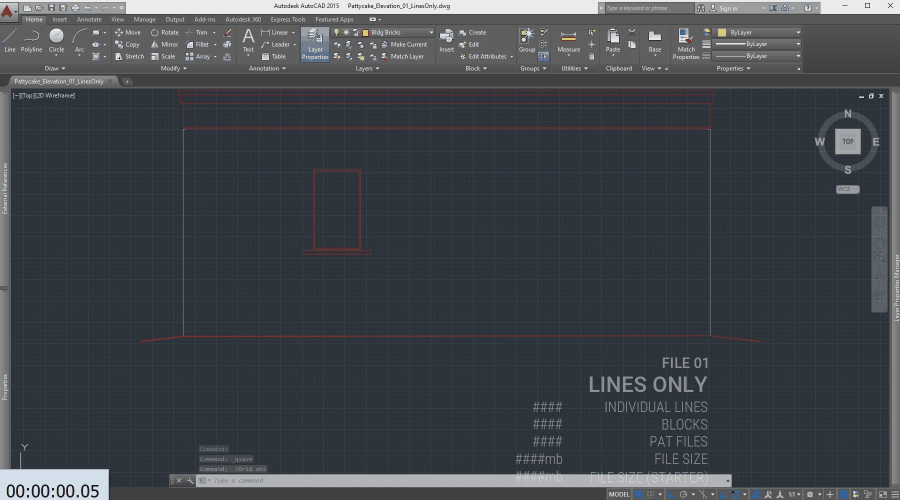
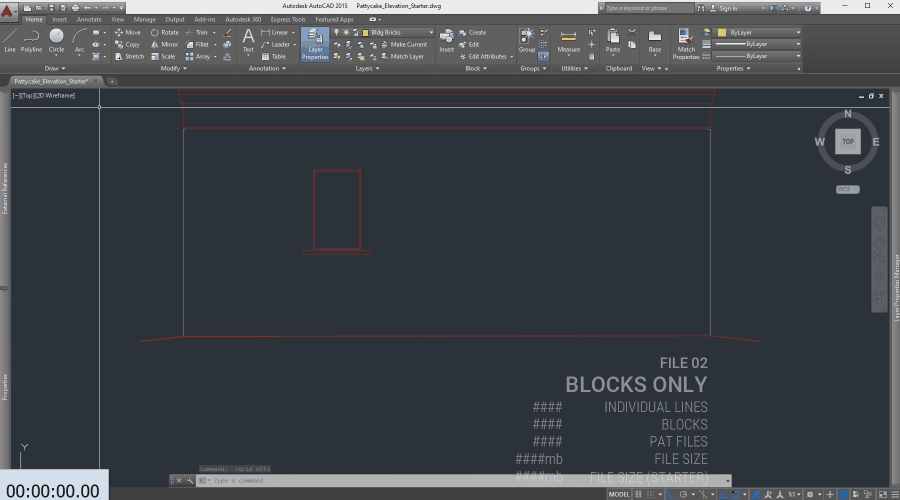
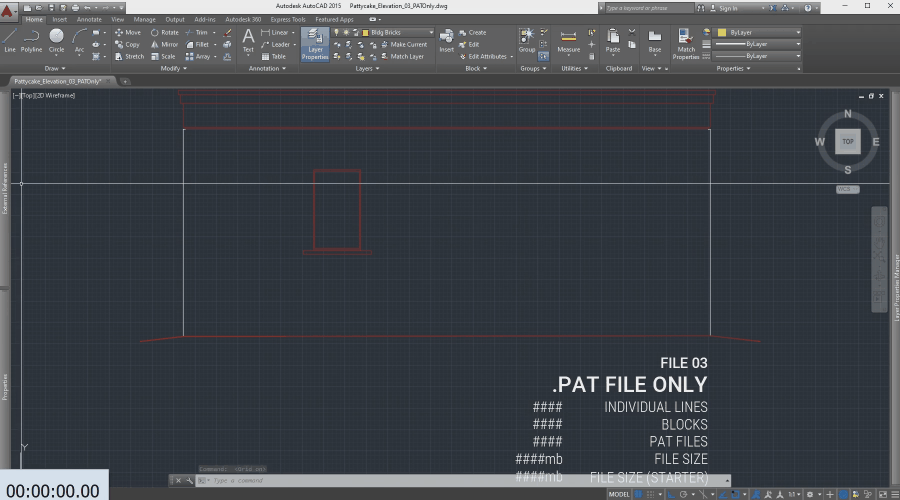
Results
From the table below you can see that using the PAT file is the fastest way to draw the elevation, along with producing the smallest file size. This is because the PAT file draws lines for you, and minimizes amount of other data needed.
| Base File | File 01 Lines Only | File 02 Blocks Only | File03 PAT Only | |
| File Size | 69 KB | 154 KB | 133 KB | 70 KB |
| Time to Draw | – | 00:06:48 | 00:08:59 | 00:02:14 |
| Lines | 0 | 10,364 (2,591 polylines) | 11,962 (3,407 polylines) | 0 |
| Block Types | 0 | 0 | 3 | 0 |
| Block Instances | 0 | 0 | 832 | 0 |
| PAT files | 0 | 0 | 0 | 1 |
Design Flexibility
Designs change. Just as important as speed to a drawing or design, is the flexibility to change that design to something else. Truly, this is where the PAT file excels the most, because with a simple pat change, you can lay out an entire new brick coursing in a fraction the time.
While this was completed from a relatively easy brick design to a different one, the same power can be seen in floor plans changing between tile sizes, and alike.
Videos Changing English Bond to Flemish Bond
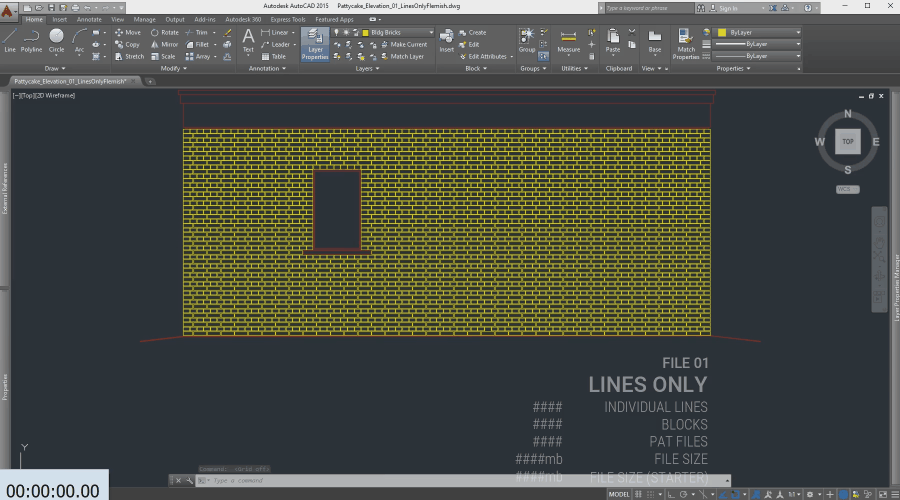

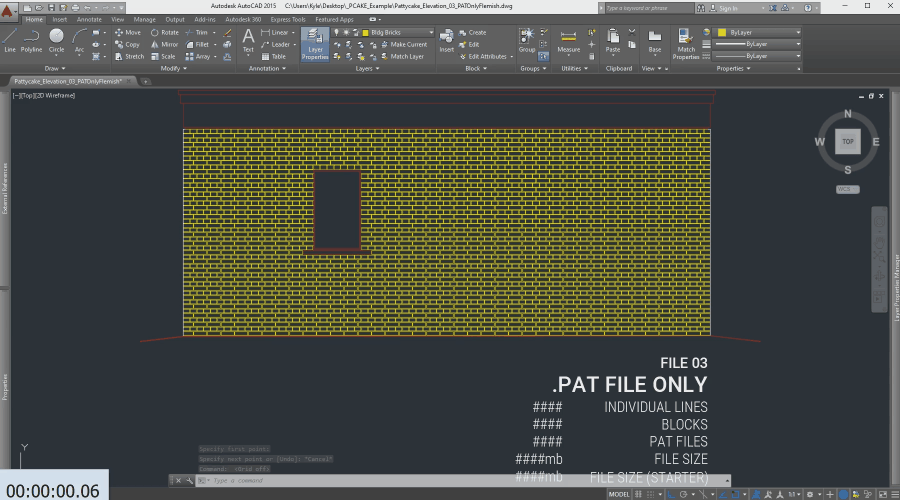
Results
Here you can see the change in the PAT file was incredibly fast, while changing the lines and blocks was actually slower than just starting from scratch.
| Base File | File 01 Lines Only | File 02 Blocks Only | File03 PAT Only | |
| Time to Change to Flemish Bond | – | 00:07:01 | 00:13:34 | 00:01:21 |
Combination is always best
This experiment illustrates the extremes of using only lines, blocks, or a PAT file, and absolutely should be taken with a huge grain of salt.
In reality, the best and most accurate way to achieve a high fidelity drawing is to use a combination of all three. Any field of repetitive elements should be drawn with a PAT file, while utilizing a combination of blocks and lines at the edges to ensure proper termination.
Larger scale vs smaller
As another option, the overall is handled by a PAT file, while the enlarged callout drawings detailing of the corners and terminations would be drawn with lines. Since the larger scale always supersedes the smaller scale, the coarse scaled overall view can be representational leaving the more precise lines for the enlarged drawing.


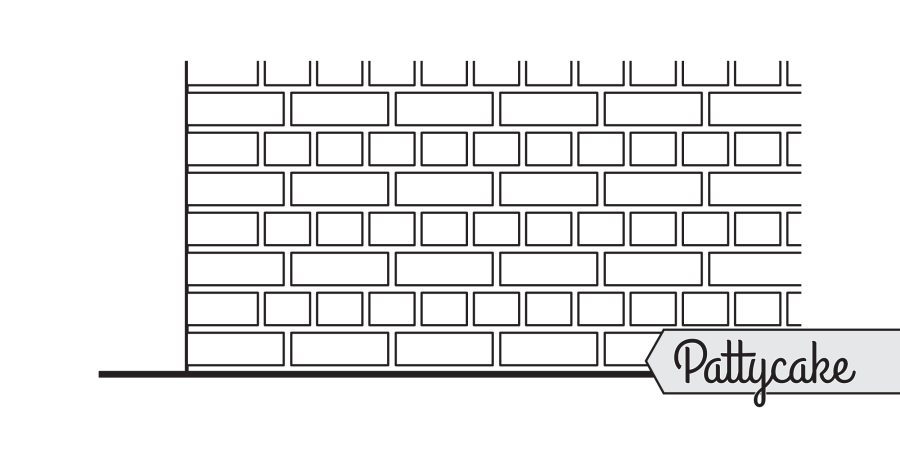
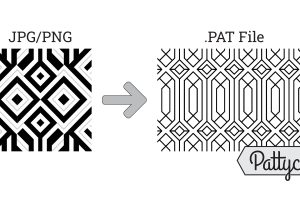
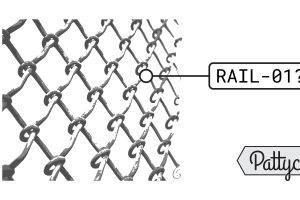
Leave a Reply
You must be logged in to post a comment.